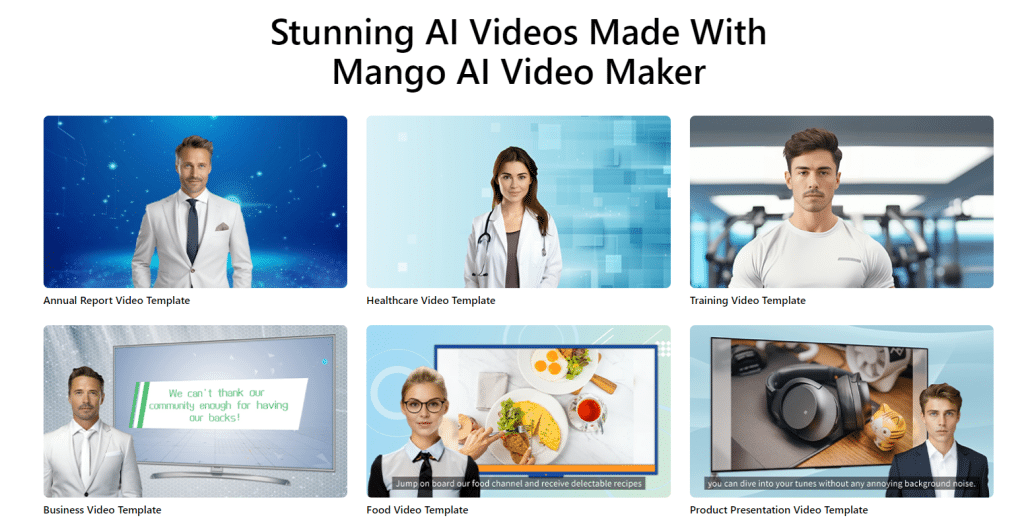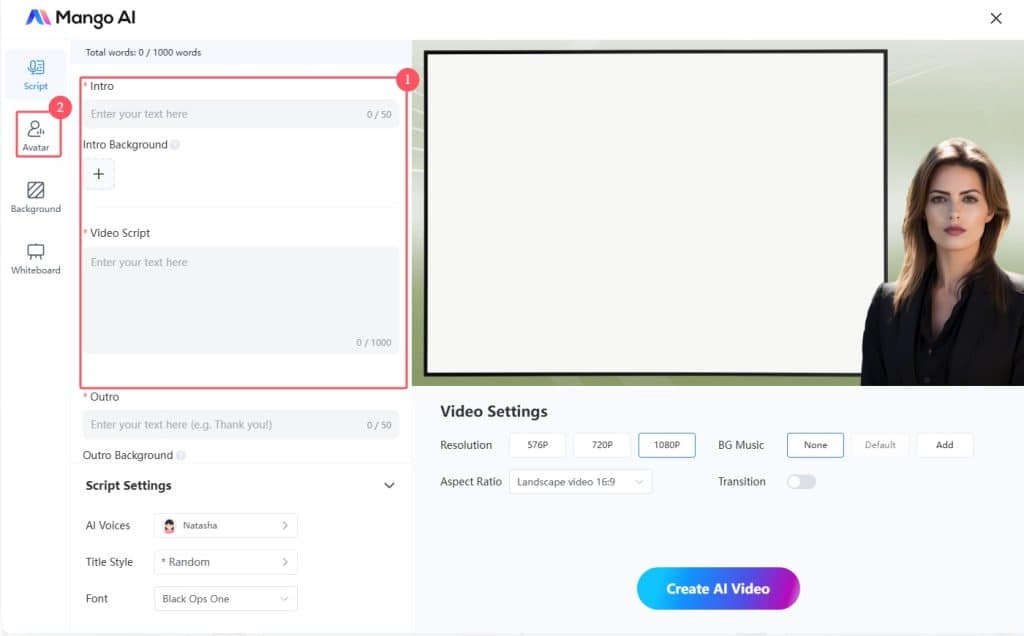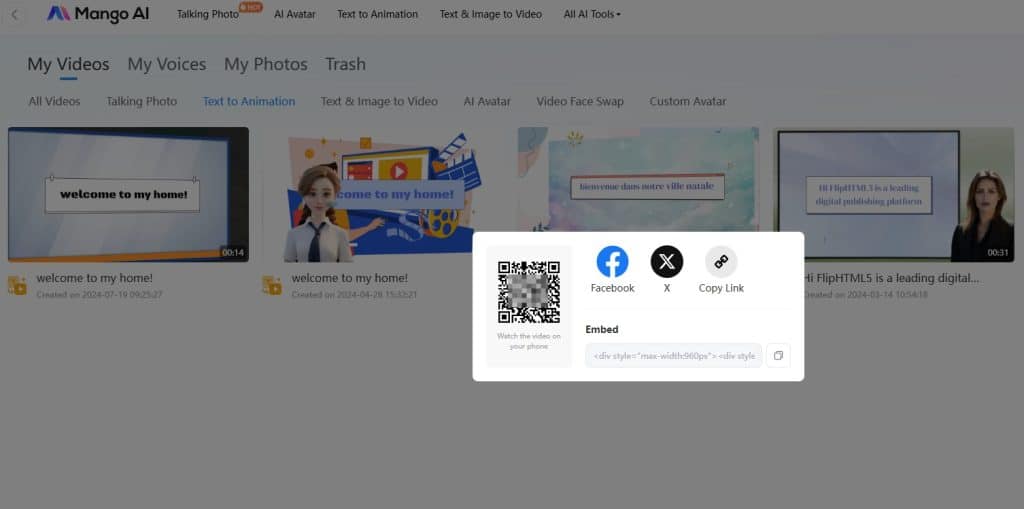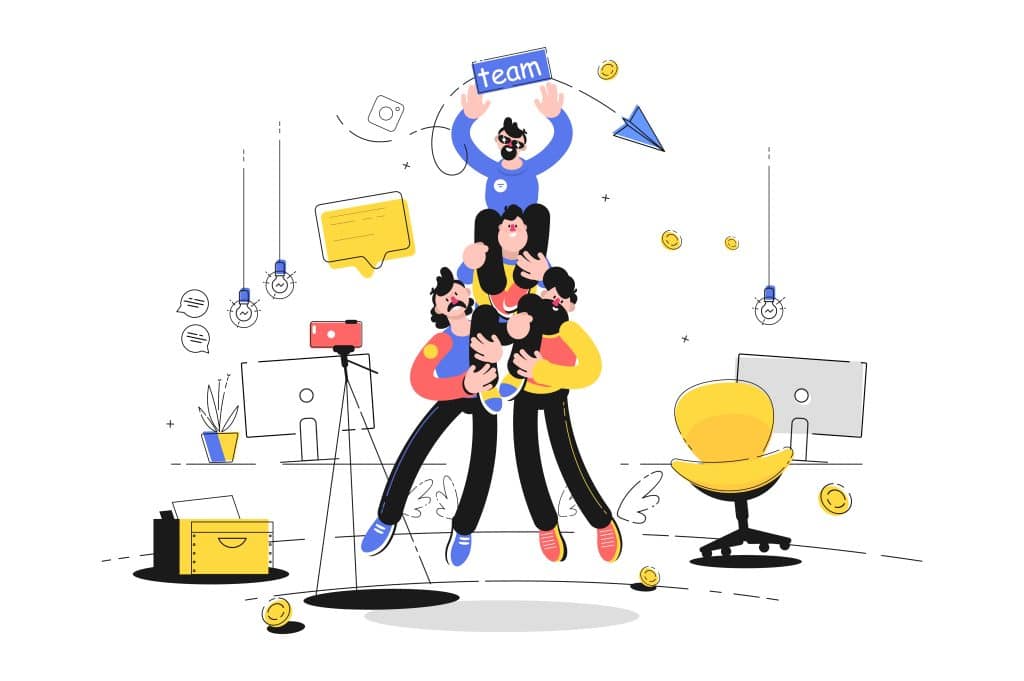Képzeld el ezt: egy tapasztalt alkalmazott, aki már több éve a vállalatnál van, és magabiztosan navigál a napi feladatok között. Az iparág fejlődésével és az új eszközök és technológiák megjelenésével azonban úgy találják, hogy gyorsan kell alkalmazkodniuk, hogy relevánsak maradjanak a szerepükben. Bár tapasztaltak, a kilátás, hogy részt vegyenek egy újabb hosszadalmas vállalati képzésen, vagy átnézzék a terjedelmes kézikönyveket, ijesztőnek és kevéssé inspirálónak tűnik.
Egy nemrégiben készült felmérés szerint a munkavállalók 75% nagyobb valószínűséggel néznek képzési videókat, mint hagyományos folyamatdokumentumokat vagy hosszú blogcikkeket. Ez azt mutatja, hogy ha gondosan megtervezzük, képzési videók jelentősen növelheti a munkavállalók elkötelezettségét és megtartási arányát. Ennek eredményeképpen gyakran nagyobb megtérülést biztosítanak a hagyományos workshopokhoz képest.
Szóval, mi is ez pontosan, és hogyan készíthetsz nagyszerű vállalati oktatóvideót? Kérjük, olvassa tovább ezt a bejegyzést, hogy többet megtudjon.
What is a Corporate Training Video?
A vállalati oktatóvideó olyan hatékony erőforrás, amelyet a szervezetek alapvető képzési és fejlesztési tartalmak átadására használnak. Gyakran a témák széles skáláját fedik le, beleértve a megfelelés, a készségfejlesztés, a vezetés és az értékesítési képzés témáit. A vizuális történetmesélés alkalmazásával ezek a videók segítenek az alkalmazottaknak abban, hogy könnyebben megértsék az összetett fogalmakat, és hosszabb ideig megőrizzék az információkat.
A vállalati oktatóvideók legfőbb előnye a rugalmasságuk. Ez azt jelenti, hogy a szervezetek testre szabhatják a tartalmat, hogy megfeleljenek a konkrét tanulási céloknak és kielégítsék a munkaerő különböző igényeit. Legyen szó akár az új alkalmazottak beillesztéséről, akár a folyamatos készségfejlesztésről, a képzési videók a különböző tanulási stílusokhoz és preferenciákhoz igazíthatók.
Why Training Videos are Essential for Employee Development?
A munkavállalók fejlesztésével kapcsolatban a képzési videók olyan fontos szerepet játszanak, amelyet nem lehet figyelmen kívül hagyni. Az alábbiakban közelebbről megvizsgáljuk, hogy a videókon keresztüli vállalati képzés miért játszik döntő szerepet a munkavállalók fejlesztésében.
Enhanced Return on Investment (ROI)
Bár a vállalati képzési videók készítésének kezdeti költségei ijesztőnek tűnhetnek, a hosszú távú előnyök jelentősek. A videós képzésbe való befektetés gyakran magasabb megtérülést hoz a hagyományos oktatói vezetésű képzéshez (ILT) képest. Az alkalmazottak jelentős 51% része előnyben részesíti az önálló tempójú videós képzést, amely lehetővé teszi számukra, hogy a saját igényeik szerint foglalkozzanak az anyaggal, ami végső soron jobb tanulási eredményekhez vezet.
A képzési videók használatával továbbá kiküszöbölhetők az oktatók felvételével, az utazással és a szállással kapcsolatos különféle költségek, így költséghatékony megoldássá válik. A Microsoft például sikeresen csökkentette a képzési költségek $320-ról mindössze $17-re csökkent három év alatt a videós képzésre való áttéréssel.
On-Demand Access to Learning
A képzési videók másik kiemelkedő jellemzője, hogy igény szerint megtekinthetők. Ahelyett, hogy az alkalmazottaknak hosszadalmas workshopokon vagy üléseken kellene részt venniük, a videók olyan alternatívát kínálnak, amely lehetővé teszi az önálló tempójú tanulást. Ez különösen előnyös a különböző időzónákban működő globális csapatok számára, mivel lehetővé teszi a munkavállalók számára, hogy akkor férjenek hozzá a képzési anyagokhoz, amikor nekik megfelel.
A lekérhető videók lehetővé teszik az alkalmazottak számára, hogy szükség esetén gyorsan hozzáférjenek a vállalati irányelvekkel és folyamatokkal kapcsolatos információkhoz. Ez a kényelem tovább csökkentheti a gyakori bevezető megbeszélések és képzések szükségességét.
Improved Knowledge Retention
Az információ megtartása a hagyományos képzési módszerek gyakori kihívása. A Ebbinghaus felejtési görbe, az emberek hajlamosak elfelejteni a tanultak jelentős részét egy héten belül. A képzési videók azonban növelhetik a megtartási arányt, ami jobb munkateljesítményhez vezet. A vizuális elemek és az érdekfeszítő történetmesélés beépítésével a videók segítenek az alkalmazottaknak abban, hogy a kulcsfontosságú fogalmak hosszabb ideig emlékezzenek.
A SAVO Group tanulmánya szerint a tanulók akár a 65% további információk ha vizuálisan jelenítik meg, ami növeli a képzés hatékonyságát, miközben minimálisra csökkenti az állandó újratanulás szükségességét.
Clarity in Complex Information
A képzési videók kiválóan alkalmasak arra, hogy az összetett témákat emészthető szegmensekre bontsák. Interaktív és magával ragadó jellegük megragadja a nézők figyelmét, és megkönnyíti a bonyolult gondolatok jobb megértését. Ez a sokoldalúság lehetővé teszi a szervezetek számára, hogy különböző típusú képzési videókat készítsenek, például animációkat, élőszereplős vagy táblabemutatókat, az információk közvetítésére szabottan.
A dinamikus látványvilág és a professzionális szerkesztési technikák beépítése fokozza az általános élményt. A munkavállalók könnyebben megértik a kihívást jelentő fogalmakat.
Establishing Authority and Expertise
A vállalati képzési videókkal a belső képzésen túlmutatóan demonstrálhatja a szervezet szakértelmét a saját területén. Megfelelő elkészítés esetén ezek a videók hiteles forrásként pozícionálhatják márkáját, és bizalmat ébreszthetnek mind az alkalmazottak, mind az ügyfelek körében. A képzési tartalmak nyilvános megosztásával a vállalatok javíthatják hírnevüket és kiterjeszthetik hatókörüket, ami végső soron a megtérülés növekedéséhez vezet.
Ez a stratégia nem csak a belső személyzet fejlesztésének kedvez, hanem marketingeszközként is szolgál, amely kiemeli a szervezet tudását és képességeit.

5 Killer Practices for Creating Corporate Training Videos
1) Establish Clear Objectives by Engaging Stakeholders
Nyugodtan kijelenthetjük, hogy a hatékony vállalati oktatóvideók készítése már jóval a kamerák forgatása előtt elkezdődik. Az egyik legkritikusabb gyakorlat az összes üzleti érdekelt fél összehangolása, és annak biztosítása, hogy mindenki egyetért a videó céljával. Ez az alapvető lépés meghatározza az egész gyártási folyamat alaphangját, és segít elkerülni a későbbi költséges tévedéseket.
Alapvető fontosságú, hogy részletes megbeszéléseket folytasson a szervezeten belüli kulcsfontosságú érdekelt felekkel. Ide tartoznak a téma szakértői, a vezetők, valamint a tanulási és fejlesztési csapat tagjai. A cél a képzési videóval kapcsolatos elvárások és eredmények egyértelmű meghatározása. A megfontolandó kérdések közé tartozhatnak a következők:
- Ki a célközönség?
Új alkalmazottak, tapasztalt munkatársak vagy esetleg külső ügyfelek számára készít képzést? A célközönség meghatározása segít a tartalmat az ő egyedi igényeiknek és tanulási stílusuknak megfelelően alakítani.
- Mi az elsődleges cél?
Határozza meg, hogy mit szeretne elérni a videóval. Tudást szeretne megosztani, új terméket népszerűsíteni, vagy esetleg egy sikertörténetet kiemelni? Céljainak tisztázása vezérli a képzési videó tartalmát és stílusát.
- Hol fog megjelenni a videó?
Döntse el, hogy mi lesz a képzési videó elsődleges platformja, és hogy a videó a vállalat weboldalán lesz-e elhelyezve, megosztva a közösségi médiában, vagy egy belső tanulásmenedzsment-rendszerben lesz-e használva. A terjesztési csatorna ismerete befolyásolhatja a videó formátumát és stílusát.
- Mi a gyártás ütemterve?
A hatékony tervezéshez elengedhetetlen az ütemterv meghatározása. Ha a videóra sürgősen szükség van, a gyártási folyamat jelentősen különbözik attól, ha több hónap áll rendelkezésre a munkára. A világos idővonal lehetővé teszi az erőforrások jobb elosztását és a kreatív fejlesztést.
- Mi a költségvetés?
A meghatározott költségvetés segít az elvárások és az erőforrások kezelésében. Fontos, hogy minden szempontot figyelembe vegyen, beleértve a felszerelést, a szerkesztőszoftvert és a professzionális szolgáltatásokat, hogy biztosítsa, hogy a pénzügyi kereteken belül maradjon, miközben elérheti céljait.
- Milyen kreatív kihívások merülhetnek fel?
A potenciális akadályok előzetes azonosítása időt és frusztrációt takaríthat meg. Szüksége van különleges tehetségekre, például színészekre vagy szinkronszínészekre? Animációra van szükség, vagy inkább élőszereplős filmre? Ezeknek a kérdéseknek a megválaszolása segít racionalizálni a gyártási folyamatot.
- Hogyan fogja mérni a sikert?
Végül határozza meg a kulcsfontosságú teljesítménymutatókat (KPI-k), amelyek meghatározzák a videó sikerét. A nézők elkötelezettségét, a tudás megtartását vagy esetleg az értékesítési konverziót vizsgálja? Ha tudja, hogyan fogja mérni a sikert, akkor az erőfeszítései ezeknek az eredményeknek az elérésére összpontosíthatók.
Alapos megbeszélések lefolytatásával és olyan lehetőségek alkalmazásával, mint a belső felmérések vagy kérdőívek, hatékonyan gyűjthet betekintést az érdekelt felektől. Ez az együttműködésen alapuló megközelítés nemcsak a célokat tisztázza, hanem azt is biztosítja, hogy mindenki ugyanazon az oldalon áll, mielőtt belevágna a vállalati képzési videók gyártásába.

2) Create and Manage Training Videos with AI
A hatékony oktatóvideók készítése a vállalati képzés egyik sarokköve, ugyanakkor a fejlesztés, szerkesztés és terjesztés folyamatai gyakran hosszadalmasak és költségesek lehetnek. A hagyományos videógyártási módszerek nemcsak jelentős pénzügyi befektetést, hanem jelentős időt és szakértelmet is igényelnek. A forgatókönyvírástól és a felvételtől a szerkesztésig és a véglegesítésig a teljes munkafolyamat sok szervezet számára megterhelő lehet, különösen a korlátozott erőforrásokkal rendelkezők számára.
Szerencsére a mesterséges intelligencia (AI) térhódításával a videókészítés területe jelentősen átalakult. Az AI-technológia egyszerűsítette a folyamatot, és egyszerűbbé és gyorsabbá tette a munkavállalók egyedi igényeinek megfelelő, kiváló minőségű oktatóvideók készítését. A videókészítés különböző aspektusainak automatizálásával az AI lehetővé teszi a vállalatok számára, hogy arra összpontosítsanak, ami igazán fontos: olyan hatásos tartalmak nyújtására, amelyek javítják a munkavállalók készségeit és növelik a termelékenységet.
A mesterséges intelligencia alapú eszközök számos területen megkönnyítik a vállalati oktatóvideók készítését. Mango AI egy olyan sokoldalú platform, amely lehetővé teszi a felhasználók számára, hogy könnyedén hozzanak létre vállalati oktatóvideókat, a technológiát és a kreativitást közérthető módon ötvözve. A kifejezetten videókészítésre tervezett funkciókkal a Mango AI leegyszerűsíti a folyamatot, és biztosítja, hogy még a kiterjedt videószerkesztési ismeretekkel nem rendelkezők is professzionális minőségű tartalmat készíthessenek.
3 Steps to Create Corporate Training Videos using Mango AI
Az alábbiakban néhány egyszerű lépést mutatunk be, amelyek segítségével hatékonyan készíthet kiváló minőségű vállalati oktatóvideókat a Mango AI segítségével.
1. lépés: Válassza ki a videó sablonját

Először is válasszon ki egy olyan videósablont, amely megfelel a képzési tartalom témájának és céljának. A ingyenes AI videó generátor a különböző iparágakra és tanulási célokra szabott, előre megtervezett sablonok széles választékát kínálja.
Ha kiválasztott egy sablont, testre szabhatja, hogy tükrözze márkája identitását és képzési céljait. Ez a kezdeti választás megalapozza a videóját, és segít biztosítani, hogy az jól illeszkedjen az általános vállalati képzési stratégiájához.
2. lépés: Adja meg a szöveget és válasszon ki egy AI avatar

Next, it’s time to enrich your video with content, so you can either type your script directly into the platform and choose an AI avatar that best suits your brand identity. Thanks to its ingyenes arccsere online eszköz segítségével könnyen feltöltheti saját portréfotóit a mesterséges intelligencia avatár arcának helyettesítésére, és ezzel megbízhatóságot kölcsönözhet a bevezető videóknak.
A Mango AI számos hangopciót kínál, így Ön kiválaszthatja a képzési anyag hangneméhez és stílusához legjobban illeszkedő hangot. Ez a lépés kulcsfontosságú, mivel a megfelelő hang fokozhatja a néző kapcsolatát a tartalommal, és még vonzóbbá teheti a tanulási élményt.
3. lépés: A videó létrehozása, megosztása vagy letöltése

Miután véglegesítette a szöveget és kiválasztotta a megfelelő hangalámondást, ideje elkészíteni a videót. A mesterséges intelligencia animációs generátor feldolgozza az Ön által megadott adatokat, és egy olyan csiszolt videót készít, amely tükrözi az Ön képzési céljait.
A videó elkészítése után előnézetben megtekintheti, hogy minden megfeleljen az elvárásainak. Ha elégedett az eredménnyel, közvetlenül megoszthatja azt a közösségi médiában vagy a vállalat belső kommunikációs platformjain. Alternatívaként letöltheti a videót offline használatra vagy a tanulásmenedzsment-rendszerébe (LMS) való integráláshoz.
Félelmetes vállalati képzési videók készítése online
3) Optimize Your Videos for Silent Viewing
A vállalati oktatóvideók készítésekor fontos felismerni, hogy sok néző hang nélkül nézi ezeket a videókat. Ez a tendencia egyre gyakoribbá válik, különösen a közösségi médiaplatformokon, ahol a felhasználók gyakran gyorsan végiggörgetik a tartalmat. Annak érdekében, hogy üzenete hatékonyan közvetíthető legyen, még akkor is, ha a hang el van némítva, vegye figyelembe a következő stratégiákat:
- Feliratok és feliratok használata
Illesszen feliratokat vagy feliratokat a videókba, amelyek lehetővé teszik a nézők számára, hogy anélkül kövessék a tartalmat, hogy fel kellene hangosítaniuk a hangerőt. A világos és tömör szöveg segíthet a fő pontok átadásában, és biztosítja, hogy a lényeges információk ne vesszenek el.
- Vizuális történetmesélés
A történet elmeséléséhez támaszkodjon az erős vizuális elemekre, és használjon magával ragadó grafikákat, animációkat és képeket, amelyek segíthetnek szemléltetni a mondanivalóját. Ez nem csak fenntartja a nézők érdeklődését, hanem megerősíti a megosztott információt.
- Szövegfedések
Használja a szöveges átfedéseket, hogy kiemelje a kulcsfontosságú üzeneteket a videó során. Emelje ki azokat a fontos fogalmakat, statisztikákat vagy cselekvésre való felhívásokat, amelyekre a nézőknek emlékezniük kell, így hang nélkül is könnyebben megérthetik a tartalmat.
- Dinamikus vizuális elemek
Hozzon létre dinamikus és vizuálisan stimuláló tartalmat a mozgás és az átmenetek beépítésével. Ez fenntartja a néző figyelmét, és arra ösztönzi, hogy foglalkozzon a videóval, még akkor is, ha nem hallja a kísérő hangot.
Ily módon optimalizálhatja vállalati képzési videók gyártását a néma megtekintésre, hogy szélesebb közönséghez jusson el, és biztosíthatja, hogy képzési anyagai mindenki számára elérhetőek legyenek, függetlenül a megtekintési környezettől.
4) Capture Attention in the First 10 Seconds
A vállalati oktatóvideó első 10 másodperce kritikus fontosságú a nézők érdeklődésének fenntartása szempontjából. Tanulmányok azt mutatják, hogy a legtöbb néző ezen a rövid időn belül dönt arról, hogy folytatja-e a megtekintést. Ha a lehető legtöbbet szeretné kihozni ebből a lehetőségből, vegye figyelembe a következő technikákat:
- Kezdje egy horoggal
Kezdje egy meggyőző kérdéssel, egy meglepő ténnyel vagy egy olyan megnyerő kijelentéssel, amely felkelti a kíváncsiságot. Tegyen fel például egy olyan gondolatébresztő kérdést a képzés témájához kapcsolódóan, amely arra készteti a nézőket, hogy azt gondolják: "Ezt meg kell néznem, hogy többet tudjak meg".
- Egyértelmű értékképzés bemutatása
Próbálja meg gyorsan kommunikálni a videó megtekintésének előnyeit. Magyarázza el, hogy a tartalom hogyan old meg egy konkrét problémát, vagy hogyan fejleszti a néző képességeit. Ha például a képzési videója a hatékony időgazdálkodásról szól, mondja el, hogy a nézők hogyan takaríthatnak meg órákat a héten a tárgyalt technikák alkalmazásával.
- Használjon magával ragadó vizuális elemeket
Győződjön meg róla, hogy a nyitó képi anyag magával ragadó, és ehhez használjon kiváló minőségű grafikákat, dinamikus animációkat vagy valós életből vett forgatókönyveket, amelyek kapcsolódnak a közönségéhez. Ez bevonzza a nézőket, és arra ösztönzi őket, hogy maradjanak elkötelezettek.
- Legyen tömör
Törekedjen arra, hogy hatékonyan adja át üzenetét, és kerülje a hosszadalmas bevezetőket; ehelyett gyorsan térjen a lényegre. Ez tiszteletben tartja a néző idejét, és fenntartja az érdeklődését a továbbiak iránt.

5) Evaluate and Iterate Based on Feedback
A hatékony vállalati oktatóvideók készítése nem ér véget az elkészítésükkel, sőt, ez még csak a kezdet. Ahhoz, hogy valóban hatást érjünk el, elengedhetetlen, hogy a videós képzések után visszajelzéseket gyűjtsünk. Ez a lépés azért kulcsfontosságú, mert így megértheti, hogy a képzési tartalom mennyire talált visszhangra az alkalmazottak körében, és hogy megfelelt-e a tanulási igényeiknek. Ha aktívan keresi a közönség véleményét, azonosíthatja, hogy mi működött jól, és mely területeken van szükség javításra.
Visszajelzések gyűjtése a videós képzések után
A visszajelzés hatékony eszközként szolgál a képzési videók fejlesztéséhez. Betekintést nyújt a tartalom hatékonyságába, az előadásmódba és az általános elkötelezettségbe. Ha az alkalmazottak úgy érzik, hogy számít a véleményük, nagyobb valószínűséggel foglalkoznak a képzési anyaggal. A visszajelzések összegyűjtése történhet felmérések, személyes interjúk vagy a videós foglalkozásokat követő csoportos megbeszélések segítségével. Ez a visszajelzés segít megérteni, hogy a videók tisztázták-e az összetett témákat, fenntartották-e a nézők érdeklődését, és ösztönözték-e a részvételt.
A hatékonyság mérésére szolgáló mérőszámok
A vállalati képzési videó hatásának hatékony értékeléséhez konkrét mérőszámokat kell nyomon követni. A legfontosabb mérőszámok a következők:
- Eljegyzési arányok: Ezt úgy lehet mérni, hogy elemezzük, hány alkalmazott nézte meg a videót teljes egészében, és hányan hagyták abba, mielőtt befejezték volna. Az átlagos nézési időt is megnézheti, hogy felmérje az érdeklődés szintjét.
- Tudásmegőrzés: Annak felmérése érdekében, hogy az alkalmazottak mennyi információt tartalmaztak meg, fontolja meg kvízek vagy értékelések elvégzését a képzési videó előtt és után. Ez segít megállapítani, hogy az anyagot megértették-e és megtartották-e.
- Visszajelzési pontszámok: Használjon értékelő skálákat a felmérésekben, hogy számszerűsítse a videó hatékonyságát az érthetőség, a relevancia és az általános elégedettség szempontjából.
A tartalom és a módszerek kiigazítása a visszajelzések alapján a folyamatos fejlesztés érdekében
Miután összegyűjtötte a visszajelzéseket és elemezte a mérőszámokat, ideje cselekedni. Használja fel a meglátásokat a tartalom és a módszerek kiigazításához. Ha például a visszajelzések azt jelzik, hogy bizonyos témák zavarosak, fontolja meg az adott szakaszok átdolgozását az érthetőség érdekében, vagy kiegészítő anyagok hozzáadását. Ha a vártnál alacsonyabb az elkötelezettségi arány, gondolkodjon el azon, hogy több interaktív elemet, például kvízeket, szavazásokat vagy vitákat építsen be, hogy a dolgozókat elkötelezetté tegye.
A hatékony vállalati képzés kulcsa a folyamatos fejlesztés. A képzési videók rendszeres értékelésével és ismétlésével biztosíthatja, hogy azok relevánsak és hatékonyak maradjanak. Ez nemcsak a tanulási élmény fokozásában segít, hanem azt is mutatja a munkavállalóknak, hogy értékelik a növekedésüket és fejlődésüket.

Bonus: 3 Examples of Effective Corporate Training Videos
Szinte minden lehetséges módját megvitattuk már annak, hogyan lehet hatásos vállalati képzési videókat készíteni, amelyek segíthetnek a munkavállalók bevonásában és készségeik fejlesztésében. Most pedig íme 3 lenyűgöző példa, amelyek a vállalati képzési videók készítésének hatékony stratégiáit mutatják be:
PwC’s Video: Embracing Diversity
A PwC koncepcióvideója egyedülálló módon közelíti meg a sokszínűség és befogadás képzését. Ez a videó minden munkavállaló számára készült, és erőteljes üzenetet közvetít a munkahelyi sokszínű nézőpontok felismerésének és megbecsülésének fontosságáról.
A videó történetmeséléssel illusztrálja azokat a valós életbeli forgatókönyveket, amelyekben az alkalmazottak akaratlanul is fenntarthatják az előítéleteket. Az etnikai és faji megkülönböztetést a kognitív folyamatainkhoz kapcsolja, ami rávilágít arra, hogy agyi mintáink hogyan alakíthatják gondolatainkat és cselekedeteinket. A film végén a nézőket önreflexióra ösztönzik, és arra, hogy mérlegeljék, hogyan tudnának egy befogadóbb környezetet kialakítani.
The Right Words at the Right Time: Customer Service Essentials
Ebben a képzési videóban a hangsúly a vendéglátó személyzet képzésén van, amely az alapvető ügyfélszolgálat helyreállítási technikák. Ez a videó gyorsreferencia-eszközként szolgál, és a kritikus információkat könnyen emészthető formátumba sűríti.
A videó életszerű forgatókönyveken keresztül mutatja be, hogy a személyzet hogyan tudja hatékonyan kezelni az ügyfélpanaszokat, és a negatív tapasztalatokat pozitívvá alakítani. Bár a videó egy hosszabb képzési modul előzetese, mégis olyan értékes meglátásokat nyújt, amelyeket a munkatársak azonnal alkalmazhatnak a feladataik során.
Navigating Customer Onboarding: Deloitte Digital Bank’s Video
A Deloitte ügyfélbevezetése egy példaértékű vállalati oktatóvideó, amely az értékesítési és ügyfélsiker-csapatoknak szól. A videó a gyakori ügyfél-fájdalompontok azonosításával kezdődik, majd bemutatja a Digitális Bankgyorsítót mint hatékony megoldást.
A videó úgy van felépítve, hogy a munkatársakat végigvezesse a termék funkcióin és a backend technológián, lehetővé téve számukra, hogy magabiztosan kezeljék az ügyfelek kifogásait. A kihívások és a megoldások bemutatásával a videó átfogó tanulási élményt nyújt.